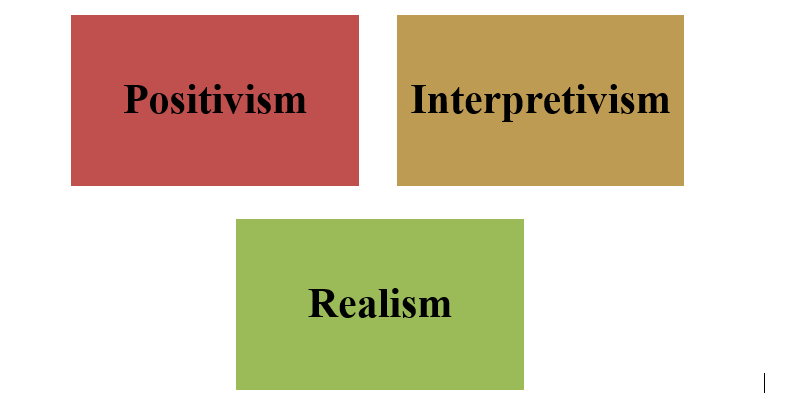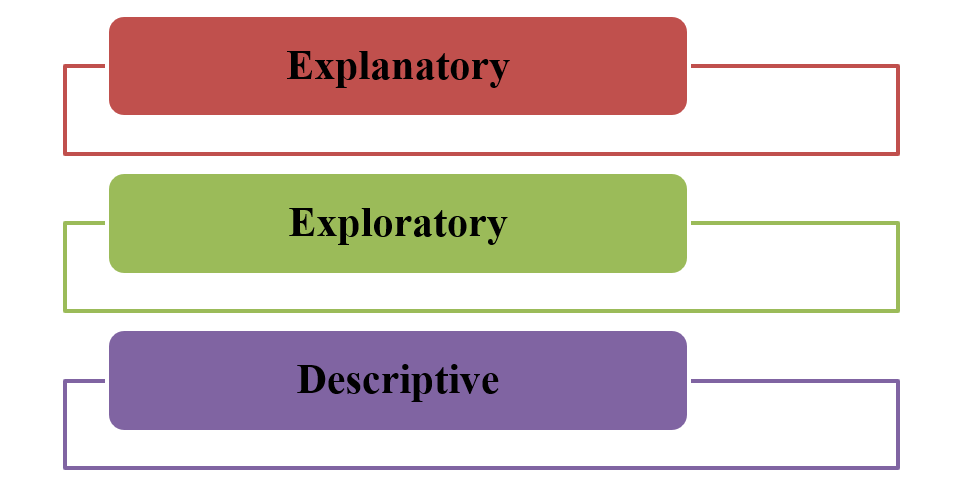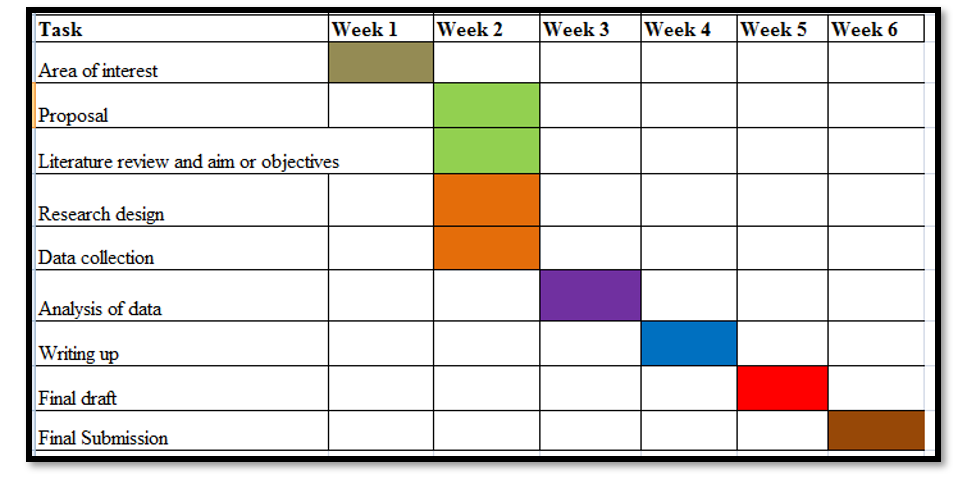MAN130 Assignment Sample – Management Research Methods 2022
1. Introduction
1.1. Research background
Human resource management is the backbone of an organization that helps to establish effective communication within the organization. It works as the bridge between the employees and the organizational goals and helps the employees to achieve the organizational goals through effective business performance.
In the present day, Human Resource Management has faced many issues that are needed to be analyzed adequately. In order to understand the challenges faced by the HRM along with the sources and ways to mitigate them, this research will be done.
1.2. Problem statement
Problem statement of the research topic suggests that in the current business days Human Resource Management has faced many issues in the organizational management process.
The challenges include compliance with laws and regulations, leadership development, employee training and management, adapting to innovation, and others. Continuous changes in the business legislation can generate many changes in the operational process of the organization.
1.3. Rationale
Innovation in organizational productivity has changed the traditional roles of the HRM in an organization and they need to adapt to the continuous changes. Identification of the required changes in the organizational structure and understanding the potential talents for recruitment has become great challenges to the HRM (Sharma, 2020).
Continuous innovation and enhanced competition in the current competitive business market have caused issues in the function of Human Resource Management. Increased competition has generated challenges in employee retention, motivation, leadership, and organizational culture (Nosková and Peráček, 2019).
Continuous changes in the role of Human Resource Management have created strategic issues that have affected organizational productivity. As suggested by Kayl et al. (2017), the health and safety of the employees and multicultural teams in the organization have also created issues for the HRM to manage the organizational functions.
The research has shed light on the current challenges faced by Human Resource Management and its mitigation for effective business productivity.
1.4. Significance
The research paper can be helpful for the future research team to understand the possible challenges in the organizational roles and responsibilities. It can be useful for future HRM to address and mitigate various issues in business development.
2. Aims and objectives
Aims
The research aims to address effective methods of the recruitment process for hiring well-skilled and loyal employees in the organization.
Objectives
- To identify various challenges faced by the HRM in the organization in terms of organizational development
- To address various HRM activities to motivate the employees to give their best performances for the organizational development
- To discover various strategies in order to mitigate the challenges faced by the HRM in terms of organizational development
- To recognize the significant factors that can be applied by the HRM for the employee’s satisfaction in the organization
3. Literature review
3.1. Concept of HRM
Human resource management (HRM) refers to the group of people in an organization that is responsible for controlling the employee life cycle in the organization. As per the view of Martin-Rios et al. (2017), the HRM department of an organization is responsible for recruiting, hiring, onboarding, training, and terminating the employees.
In addition, extracting organizational productivity through the performances of the employees is the key role of a human resource manager. As referred by Claus (2019), administering the employee benefits for the organizational development through recruitment and training process are the prime responsibilities of a human resource manager. The HR manager is supposed to maintain the employee record, update organizational policies as per requirement, and conduct disciplinary actions.
The human resource manager is required to acknowledge the organizational needs and hire efficient employees based on the required skills for the vacant position. HR managers possess the authority to recruit and terminate the employees at any time for valid reasons.
As stated by Gannile et al. (2020), an HR manager is responsible for both the development of the organization and the failure in the organization. The prime duty of the HR manager is to provide required training to the new employees for organizational development. Goal setting and applying the most fruitful strategies to achieve the organizational goals through the employees are the key responsibility of an HR manager (Riabenko, 2018).
3.2. Current challenges of HRM
Compliance with the business laws and regulations can cause mean audits and the demise of the organization in which HR is supposed to take all the responsibilities. According to the view of Bannikov and Abzeldinova (2021), sudden changes in the management process can decrease the business productivity of an organization.
In this kind of situation, an HR manager has to take the responsibility to encourage the employees to give their best performance for the organizational development. Poor training and an insufficient supply of resources can cause problems for the employees to accomplish their assigned tasks and increase business productivity.
As opined by Ringle et al. (2020), rapid changes in technology can cause problems in the organization regarding the adaptation of new technologies. This can increase the responsibility of the HR manager for giving training to the employees effectively. This will assist them to seek significant roles of the human resource manager, thereby, managing performance of it.
3.3. Impact of the challenges
Challenges faced by the HR manager can increase the risk of the organization in terms of making more profit. As influenced by Stahl et al. (2020), organizational challenges can impact the future sustainability of the organization. Challenges in the HRM practices include retention of the employees in the organization for a long time for organizational benefits.
However, such challenges can disrupt or reduce the overall business productivity of the organization. Diversity and discrimination in the employees can generate a big challenge for the HR manager of an organization. This can impact the communication process among the employees of an organization and reduce the performance quality.
Challenges regarding technological implementation can confuse the task and reduce the overall business productivity of the organization. Mistakes in filling the payroll form can cause issues in the accounting department for that either the organization can make a loss or the employees can be dissatisfied.
3.4. HRM Strategies
The HR manager can apply various strategies to identify the possible challenges in the organization. Various tools and techniques can be used by the HR manager to monitor the daily performance of the employees and ensure business productivity. In terms of avoiding legal issues, the HR manager needs to practice the business law, employee health, and safety law in the organization (Nosková and Peráček, 2019).
The HR manager needs to convince the employees about the benefits of the changed management policies. Effective leadership skills can help the HR manager to motivate the employees to give their best performance for the organizational development.
The HR manager can hire managers that can give proper training to the employees and monitor them during their task accomplishment. In the words of Kayl et al. (2017), investing in the workforce can provide the HR manager with good and loyal employees for long-term organizational sustainability. Effective communication can help the employees to have a flexible workplace that can motivate them to give their best performance.
Rewarding the employees for their effective performance can help them to remain satisfied in the organization. Employee satisfaction can help the organization to earn more profit from their business in the current competitive business platform.
3.5. Theories
Theories are an essential part to obtain research on a particular topic which is beneficial in terms of generating ideas on the research topic. It helps the researcher to understand the research topic more intensely and several predictions can be made regarding a research topic (Sharma, 2020).
Multiple theories are there to understand HR management and its challenges better such as motivation theory, contingency theory, organizational behavioural theory, and others. Several theories on HR management that can be followed to make the research more intense are discussed below:
Motivation theory
Fulfilling certain organizational needs of the employees can help them to give their best effort to achieve organizational goals. As opined by Polat et al. (2017), enough motivation is needed for the employees to increase organizational productivity. Hiring and motivating efficient and passionate employees are the key responsibilities of the HR manager of an organization.
A combination of motivational resources along with successful leadership and management strategies can influence the employees to give their best performance. Proper observation is necessary to recognize the best employee and reward them for excellent business performances (Nosková and Peráček, 2019).
Resource-based theory
Resource-based theory suggests that an organization must have all the necessary resources to initiate and accomplish the organizational goals effectively. As influenced by Davis and Simpson (2017), organizational resources refer to the required materials, skilled employees, proper training and education to the employees, technical support, financial support, and others. In case the HR manager can utilize the organizational resources effectively then, that can be a competitive advantage for the organization.
Organizational behavioural theory
Organization behavioural theory is helpful for the HR of an organization to acknowledge what people in the organization think, feel, and do. In the words of Zakaria et al. (2020), organizational behavioural theory helps the HR manager to anticipate, recognize, and monitor all the employees in the organization.
This theory can help the HR manager to enhance the job performances of the employees along with fostering creativity and leadership in them. However, this theory can be applied to enhance the effectiveness of an organization through effective organizational behaviours with the employees.
3.6. Literature gap
The research can lack data and information as the data collection process will be based on the interviews of the participants. Participants may not have ideas regarding the challenges faced by the HR manager in an organization. The authenticity of the responses of the participants will not be verified for this research as the participants will be from different organizations.
The roles and responsibilities of the HR manager can be different in the different industries which can cause conflicts in the collected answers of the respondents. The expected outcome of this research can be different from the actual outcomes of the research.
4. Methodology
4.1. Research philosophy

Figure 4.1: Research philosophy
(Source: Ryan, 2018)
Research philosophy plays a crucial role while initiating sample collection for particular research in an authentic manner. Positivism research philosophy will be used to extract valuable information from the collected data. As stated by Ryan (2018), this philosophy can help the researcher to analyze large scales of data that will be collected from the participants.
It will help the researcher to get an overview of the society through surveys and interviews. In this research proposal, positivism research philosophy will help the research team to understand the insights of the HR manager of an organization deeply. It will also help to generate hypotheses that the other research philosophies such as interpretivism and paradigm will not do.
4.2. Research approach

Figure 4.2: Research approach
(Source: Pearse, 2019)
A deductive research approach will be followed to conduct this research as the approach will be helpful to collect core information on HR management. Besides, an insight into the research topic can be achieved through a deductive research approach. According to Pearse (2019), the possible facts that are relevant to the research topic can be proclaimed through a deductive research approach.
Besides that, deductive approaches can help the research team to eliminate all the irrelevant data as secondary data. Inductive research approaches make general conclusions from specific observations that will not be beneficial for this research. For this reason, an inductive research approach has not been applied to conduct this research (Nosková and Peráček, 2019).
4.3. Research design

Figure 4.3: Research design
(Source: Atmowardoyo, 2018)
A descriptive research design will be followed to conduct this research as data for this research will be collected through surveys and interviews. As referred by Atmowardoyo (2018), proper analysis of the collected data can be possible through descriptive research design.
Different methods can be used to describe the collected data and justify the hypothesis for the research topic. In the case of this research, the case study method will be applied to describe the core understanding of HR management. Various case studies will be selected from the academic journals that will be relevant to the research topic (Nosková and Peráček, 2019).
Data will be collected from various employees in different organizations and HR managers from distinct organizations. In this research, the data analysis process will be conducted through the data that will be collected directly from the participants. In this case, no existing research paper will be analyzed to reach the results through generating themes (Atmowardoyo, 2018).
Therefore, the thematic analysis will not be initiated for this research, and face-to-face interviews will be taken by the research team.
4.4. Research sampling strategy

Figure 4.4: Research sampling strategy
(Source: Rahi, 2017)
Primary data will be collected through surveys and interviews of the employees, project managers, and HR managers of different organizations. The ground theory will be followed to collect data from the targeted participants for this research to minimize the chance of failure of this research (Nosková and Peráček, 2019).
Multiple questionnaires will be made and Likert scale will be used to help the participants in responding to the questions. Responses that will be received from the surveys and interviews will be representing the opinions of entire employees and various HR managers (Rahi, 2017). An open-ended questionnaire will be followed to conduct this research and a deductive research approach will help the research team to avoid irrelevant data.
4.5. Data collection method

Figure 4.5: Data collection method
(Source: Terziev, 2017)
Random sampling will be done to conduct this research so that different locations will be chosen by the research team. Three different organizations called Avensure, Moorepay, and Peninsula will be chosen to collect data through interviews. For the interview, the HR managers of these organizations will be chosen who will be asked open-ended questions regarding various challenges (Nosková and Peráček, 2019).
The HR managers will be asked the same questions by different members of the research team once the organizations allow the research team to take interviews. As influenced by Terziev (2017), the best HR management practices will be revealed from the interviews.
Current challenges in the organizations faced by the HR managers will be asked in the interviews. It will help the research team to acknowledge various challenges that are faced by the HR managers of different organizations.
The data collection method will be finished within two weeks so that the remaining time to finish this research can be utilized appropriately. Random employees will be chosen in the three organizations that will be from different departments in those organizations.
All the participants and respondents will be convinced that their identities will not be disclosed to anyone. Random sampling will be initiated to conduct this research in a fair policy and minimizing any biases in choosing the participants (Sharma, 2017). Primary qualitative analysis will be done after the accomplishment of the data collection process. In this research, the HR managers will be able to share their expectations regarding the needed talents in the organization.
4.6. Data analysis
Research work regarding the challenges faced by the HR managers in various organizations will be obtained through qualitative analysis of the collected data. According to the view of Levitt et al. (2018), different theories can help the research team to understand the possible outcomes of a research topic.
Different strategies will be revealed from the primary data that will be collected from the interviews and surveys in the organizations. The qualitative research approach will be helpful for the research team to acknowledge the concept, opinion, and experiences of the participants in the survey and interviews. Primary data will help the research team to collect authentic data from the participants that will reflect the insights of the HR management in various organizations (Nosková and Peráček, 2019).
4.7. Ethical considerations
The research will be conducted for enhancing the knowledge and information regarding the HR management of an organization. All the data that will be collected by the research team will be kept confidential with the help of Intellectual property protection (Guinchard, 2021).
The identity of all the employees that will participate in the survey and interview will be kept secret by the research team. Identity of the HR managers will not be disclosed by the research team and privacy of the collected data will be maintained. In terms of preventing cyber attacks, the UK Data Protection Act 2018 will be followed by the research team.
4.8. Timeline
[Referred to Appendix 1]
5. Conclusion
5.1. Conclusion
Different strategic policies to manage the workers in an organization can be obtained by the HR manager through organizational behavioural theory. A qualitative approach will be used to analyze the collected data for this research as the research will not include any numerical calculations.
All the collected data will be analyzed to generate hypotheses regarding the various challenges faced by the HR managers. Collected data will be analyzed in effective ways to find out dynamic challenges in the organization faced by the HR managers. The research has interpreted that all the participants will be asked the issues or clashes they have faced in the organizations with the HR managers.
5.2. Expected outcomes
The recruitment process in the organization may need to be changed to appoint more skilled and efficient employees in the organization. Based on the above discussion it can be concluded that the research will need to give more effort to collect valuable data from the research participants.
Pending approval for the research proposal can cause a delay in the research process for that effective effort will be required. Data collection tools will be useful for the research team in terms of collecting multiple authentic data from multiple participants. It can be expected that this research will help the research team to find out the solutions to mitigate the issues faced by the HR managers. Expected outcomes from this research are that the research team will be able to meet the aim and objectives of this research.
References
Atmowardoyo, H., 2018. Research methods in TEFL studies: Descriptive research, case study, error analysis, and R & D. Journal of Language Teaching and Research, 9(1), pp.197-204. https://www.researchgate.net/profile/Haryanto_Atmowardoyo/publication/322193576_Research_Methods_in_TEFL_Studies_Descriptive_Research_Case_Study_Error_Analysis_and_R_D/links/5a4c6364a6fdcc3e99cf7608/Research-Methods-in-TEFL-Studies-Descriptive-Research-Case-Study-Error-Analysis-and-R-D.pdf
Bannikov, S.A. and Abzeldinova, K.T., 2021, February. Digital Transformation of HR Management System. In International Scientific and Practical Conference “Russia 2020-a new reality: economy and society”(ISPCR 2020) (pp. 54-58). Atlantis Press. https://download.atlantis-press.com/article/125953197.pdf
Claus, L., 2019. HR disruption—Time already to reinvent talent management. BRQ Business Research Quarterly, 22(3), pp.207-215. https://journals.sagepub.com/doi/pdf/10.1016/j.brq.2019.04.002
Davis, P.J. and Simpson, E., 2017. Resource-based theory, competition and staff differentiation in Africa: Leveraging employees as a source of sustained competitive advantage. American Journal of Management, 17(1), pp.19-33. http://www.na-businesspress.com/AJM/DavisPJ_Web17_1_.pdf
Gannile, C., Ab Yajid, M.S., Khatibi, A. and Azam, S.F., 2020. IMPACT OF MEASUREMENT DRIVEN HR STATISTICS ON STRATEGIC HUMAN RESOURCE MANAGEMENT FUNCTIONS ON ORGANIZATIONAL PERFORMANCE IN INSURANCE INDUSTRY. European Journal of Social Sciences Studies, 5(3). https://www.oapub.org/soc/index.php/EJSSS/article/view/861
Guinchard, A., 2021. Our digital footprint under Covid-19: should we fear the UK digital contact tracing app?. International Review of Law, Computers & Technology, 35(1), pp.84-97. http://repository.essex.ac.uk/28051/1/034.pdf
Kayl, I.I., Zudina, E.V., Epinina, V.S., Bakhracheva, Y.S. and Velikanov, V.V., 2017. Effective hr management as the most important condition of successful business administration. In Integration and Clustering for Sustainable Economic Growth (pp. 23-30). Springer, Cham. http://ndl.ethernet.edu.et/bitstream/123456789/65288/1/17.pdf#page=38
Levitt, H.M., Bamberg, M., Creswell, J.W., Frost, D.M., Josselson, R. and Suárez-Orozco, C., 2018. Journal article reporting standards for qualitative primary, qualitative meta-analytic, and mixed methods research in psychology: The APA Publications and Communications Board task force report. American Psychologist, 73(1), p.26. https://psycnet.apa.org/fulltext/2018-00750-003.pdf
Martin-Rios, C., Pougnet, S. and Nogareda, A.M., 2017. Teaching HRM in contemporary hospitality management: a case study drawing on HR analytics and big data analysis. Journal of teaching in travel & tourism, 17(1), pp.34-54. https://www.researchgate.net/profile/Carlos-Martin-Rios/publication/312175514_Teaching_HRM_in_contemporary_hospitality_management_a_case_study_drawing_on_HR_analytics_and_big_data_analysis/links/5a81318aaca272a73769f0df/Teaching-HRM-in-contemporary-hospitality-management-a-case-study-drawing-on-HR-analytics-and-big-data-analysis.pdf
Nosková, M. and Peráček, T., 2019. Termination of employment in the Slovak Republic as a key issue of HR Management. Central European Journal of Labour Law and Personnel Management, 2(2), pp.44-59. http://yadda.icm.edu.pl/yadda/element/bwmeta1.element.desklight-e1a28660-533c-402a-8404-c2109daf4bb0/c/noskova-peracek.pdf
Pearse, N., 2019, June. An illustration of deductive analysis in qualitative research. In 18th European Conference on Research Methodology for Business and Management Studies (p. 264). http://eprints.lincoln.ac.uk/id/eprint/36421/1/ECRM19-Proceedings-Download.pdf#page=279
Polat, T., Bal, P.M. and Jansen, P.G., 2017. How do development HR practices contribute to employees’ motivation to continue working beyond retirement age?. Work, Aging and Retirement, 3(4), pp.366-378. https://academic.oup.com/workar/article-abstract/3/4/366/3101323
Rahi, S., 2017. Research design and methods: A systematic review of research paradigms, sampling issues and instruments development. International Journal of Economics & Management Sciences, 6(2), pp.1-5. https://d1wqtxts1xzle7.cloudfront.net/54953128/research-paradigms-sampling-issues-and-instruments-development-2162-6359-1000403.pdf?1510173593=&response-content-disposition=inline%3B+filename%3DResearch_Design_and_Methods_A_Systematic.pdf&Expires=1620229415&Signature=OvhekYQdaoeL3muGOJ0l7W8N8cYc74vU71NGdvFJmyeHa~LUNDSxxl0hYUeX1a36yNlDTVDjaVlYM5vQeF7m1iqX4Dcy6uBsJ5gd5hOfrWNR7nlBObvrZm3s-JsZHZ12qXP9sJ8bQ2PZNM5xVFoByT0XupSJQrf4HdD8TThaBPEKGtYrKo~OTrj371C0wdYyDaANII5vEOp9nNzrGXyynXXnf5LWkIcPo8gYLC3k39-uZpdiIv4lPWqDYl7m9V2t-jm5-tlE7w8VNG97s0pKCC87g18FTJEkRdOhmbcbBO0i6RdCRrvTWNNbHoNOkJ8aO8HDXreVIgjGarAgoaYg1g__&Key-Pair-Id=APKAJLOHF5GGSLRBV4ZA
Riabenko, E.A., 2018. HR-manager in Russia and abroad: differences in labour market requirements. In Russia in the Global World: Challenges of the XXI Century (pp. 186-188). http://science.usue.ru/images/docs/itogi/russia2018.pdf#page=186
Ringle, C.M., Sarstedt, M., Mitchell, R. and Gudergan, S.P., 2020. Partial least squares structural equation modeling in HRM research. The International Journal of Human Resource Management, 31(12), pp.1617-1643. https://www.researchgate.net/profile/Fawad_Hussain6/post/When-we-use-simple-PLS-bootstrapping-and-consistent-PLS-bootstrapping/attachment/5f291ddbce377e00016b74ce/AS%3A920728291524608%401596530139318/download/2018Ringleetal_IJHRM.pdf
Ryan, G., 2018. Introduction to positivism, interpretivism and critical theory. Nurse researcher, 25(4), pp.41-49. https://oro.open.ac.uk/49591/17/49591ORO.pdf
Sharma, G., 2017. Pros and cons of different sampling techniques. International journal of applied research, 3(7), pp.749-752. https://d1wqtxts1xzle7.cloudfront.net/58765080/Pros_and_cons_of_sampling.pdf?1554128717=&response-content-disposition=inline%3B+filename%3DImpact_Factor_5_2_IJAR.pdf&Expires=1620229566&Signature=IXYI~yHLx5Zl4l6gCQqZ691HlcMNzwV1~yqukcV8gQcBZJRNGQSOE-49cw0WNvB3QMPOvVvaLUmTS8qOIMsYiYpclLfK2IR9OBRr6UcQPbmzO7JEPZnD8pVUAIFdYQygGi-SMZIqdOqOUaHT-9~PzuEISqsD0Elawnk~RZCcbQDiHWFBPROscW9AJ1IOYYCHcnfZtyvFvhlWWBxo-wEkalUu9IfDjqme~FDNsaCMmqHPWKVD1lEjVuSrGHtp-zuPt5UNf2Py0ezLWW4Vdwvy646~qKG00d8gew-zE2eAxs-YBuUV9crK3gaOXdNF~IlCJkfXbTAtVkrp4u1YDkT02g__&Key-Pair-Id=APKAJLOHF5GGSLRBV4ZA
Sharma, N., 2020. HUMAN RESOURCES IN THE DIGITAL AGE (Issues impact and challenges of e-HR in the Indian Scenario). HUMAN RESOURCES, 29(02), pp.2632-2638. https://www.researchgate.net/profile/Nandini-Sharma-10/publication/349214114_HUMAN_RESOURCES_IN_THE_DIGITAL_AGE_Issues_impact_and_challenges_of_e-HR_in_the_Indian_Scenario/links/6025376992851c4ed56588e3/HUMAN-RESOURCES-IN-THE-DIGITAL-AGE-Issues-impact-and-challenges-of-e-HR-in-the-Indian-Scenario.pdf
Stahl, G.K., Brewster, C.J., Collings, D.G. and Hajro, A., 2020. Enhancing the role of human resource management in corporate sustainability and social responsibility: A multi-stakeholder, multidimensional approach to HRM. Human Resource Management Review, 30(3), p.100708. https://www.researchgate.net/profile/Guenter_Stahl3/publication/335583397_Enhancing_the_role_of_human_resource_management_in_corporate_sustainability_and_social_responsibility_A_multi-stakeholder_multidimensional_approach_to_HRM/links/5d724e34a6fdcc9961b21aeb/Enhancing-the-role-of-human-resource-management-in-corporate-sustainability-and-social-responsibility-A-multi-stakeholder-multidimensional-approach-to-HRM.pdf
Terziev, V., 2017. Research on the status of social entrepreneurship in Bulgaria: a presentation of a project report’s primary data. Journal of Innovations and Sustainability, 3(1), pp.9-33. https://www.researchgate.net/profile/Is_Academy/publication/317039007_Research_on_the_Status_of_Social_Entrepreneurship_in_Bulgaria_a_Presentation_of_a_Project_Report%27s_Primary_Data/links/5921cd5eaca27295a8a64032/Research-on-the-Status-of-Social-Entrepreneurship-in-Bulgaria-a-Presentation-of-a-Project-Reports-Primary-Data.pdf
Zakaria, M., Omar, N., Rosnidah, I., Bustamana, H.A. and Hadiyati, S.N., 2020. Adopting the planned behavioural theory in predicting whistleblowing intentions among Indonesian public officials. Management & Accounting Review (MAR), 19(3), pp.25-47. https://ir.uitm.edu.my/id/eprint/42268/1/42268.pdf
Appendix
Appendix 1: Timeline

(Source: Created by the researcher)
Know more about UniqueSubmission’s other writing services:

